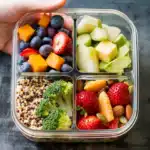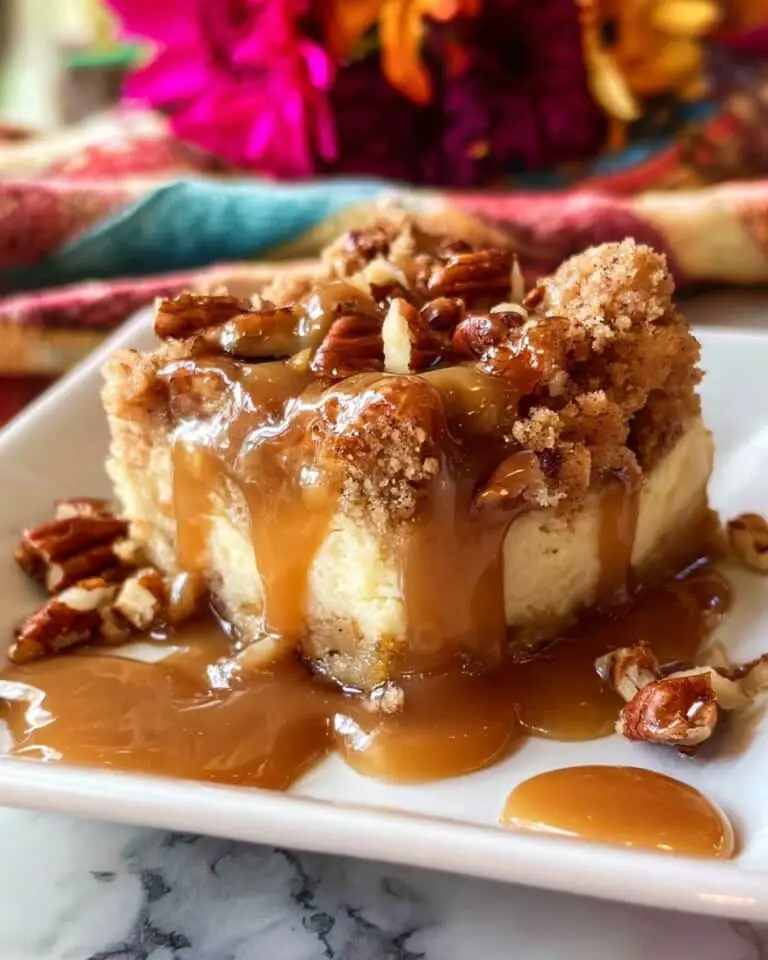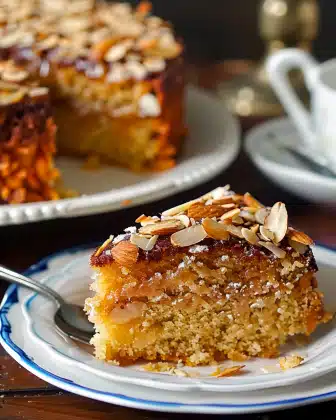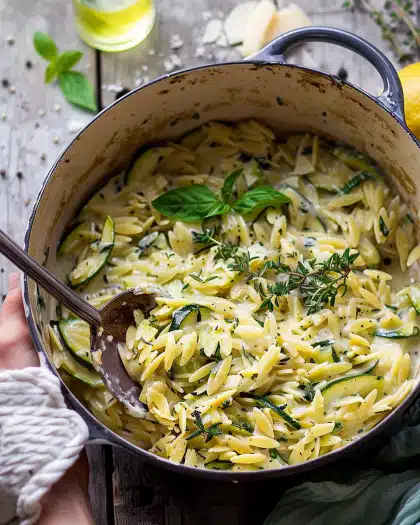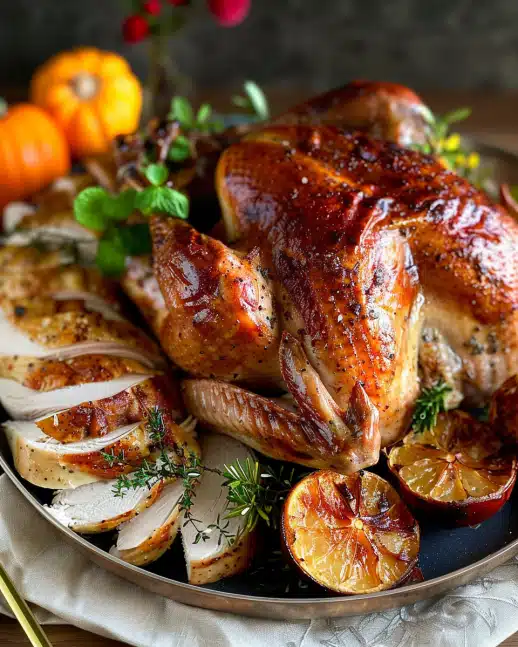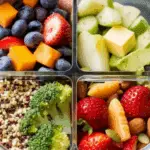Packing a healthy lunch box doesn’t have to be a stressful morning ritual. With just a bit of planning and a few strategic swaps, you can create nourishing, fun, and satisfying meals for your family (or yourself) every day. Whether you’re catering to picky eaters or trying to avoid the midday energy crash, these simple tips will help you master the art of the balanced lunch box.
Why You’ll Love This Guide
-
Provides practical, easy-to-follow advice
-
Encourages healthy eating without being restrictive
-
Helps simplify your mornings with prep tips
-
Great for kids and adults alike
-
Easily adaptable to dietary preferences (vegan, vegetarian, etc.)
-
Makes lunch more fun, colorful, and enjoyable
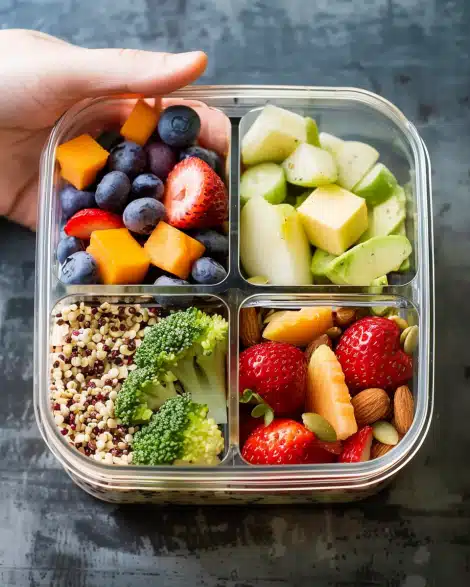
Ingredients
(Tip: You’ll find the full list of ingredients and measurements in the recipe card below.)
While this guide doesn’t focus on a specific recipe, here are key components to include in a balanced lunch box:
-
Whole grains (quinoa, whole wheat bread, brown rice)
-
Lean protein (beans, hummus, tofu, eggs, chicken)
-
Healthy fats (nuts, seeds, avocado)
-
Fresh produce (carrots, bell peppers, cucumber, fruit)
-
A small treat or snack (trail mix, dark chocolate square, granola bar)
Directions
1. Swap Up Your Normal Sandwich Routine
Tired of the same old sandwich? Switch it up by:
-
Using different spreads like hummus, cashew cream, or pesto with nuts
-
Serving ingredients in a pita, tortilla wrap, or bento-style compartments
-
Making it visually fun with colorful veggies cut into matchsticks, spirals, or rounds
2. Keep Lunches Fresh
Nobody likes a soggy or lukewarm lunch. Keep things at the right temperature:
-
For cold items: Pre-chill thermoses with ice water, use reusable cold packs, or freeze juice boxes/yogurt cups
-
For hot items: Use an insulated thermos and pre-heat it with boiling water before filling
3. Make School Lunches Easy
Avoid the morning chaos with a little planning:
-
Prep components like sliced veggies, dips, and grains on Sunday
-
Lay out containers, napkins, and utensils the night before
-
Get kids involved by having them portion snacks or pack their own boxes
Servings and timing
This guide is intended for planning one lunch per person per day.
Prep time: 1 hour weekly (Sunday prep)
Assembly time: 5–10 minutes per lunch, daily
Variations
-
Vegan Lunch: Quinoa salad with chickpeas, cucumber, and tahini dressing
-
Kid-Friendly Bento: Turkey pinwheels, carrot sticks, grapes, and pretzels
-
Gluten-Free Option: Rice cakes with avocado and tomato, boiled eggs, fruit
-
Snackable Lunch Box: Hard-boiled eggs, cheese cubes, crackers, and apple slices
-
No-Reheat Lunch: Pasta salad, raw veggies with hummus, and trail mix
Storage/Reheating
-
Most lunches can be made the night before and stored in the fridge overnight
-
Use insulated lunch bags with cold packs to keep items fresh
-
For hot lunches, use a preheated thermos and consume within 4–6 hours
-
Store perishable items separately until ready to pack
FAQs
How do I keep lunches from getting soggy?
Pack sauces and dressings separately and assemble items like sandwiches or wraps right before eating if possible.
What’s the best thermos for school lunches?
Look for double-walled stainless steel thermoses in various sizes to suit different meal types (soup, pasta, rice, etc.).
Can I pack the same lunch every day?
Yes, but add variation in fruits, vegetables, or snacks to keep things interesting and balanced.
How do I pack a lunch for a picky eater?
Offer a variety of textures and let them choose some components—this increases their involvement and excitement.
What’s the healthiest thing to pack in a lunch box?
Aim for balance: include whole grains, protein, fruits, and vegetables. A small treat is fine too!
Are homemade lunches really healthier than store-bought?
Generally yes, because you can control the ingredients, portion sizes, and avoid additives or excess sugar and sodium.
How can I save time in the morning?
Prep ingredients on Sunday and pre-portion snacks, veggies, and fruit. You can even pre-make a few full lunches ahead.
What are some good plant-based protein options?
Try lentils, chickpeas, black beans, tofu, edamame, tempeh, or nut-based spreads like almond or sunflower seed butter.
What if my kid doesn’t eat the lunch I pack?
Involve them in the prep process. Offer a few options and encourage them to help pack their own meals.
Can I freeze items for lunch?
Yes! Cooked grains, muffins, mini burritos, and soup freeze well. Pack frozen to thaw by lunchtime or heat before packing in a thermos.
Conclusion
Packing a healthy lunch box doesn’t require gourmet cooking or hours in the kitchen. With a little planning, creativity, and flexibility, you can build lunches that are delicious, nutritious, and hassle-free. Whether you’re feeding a child, a partner, or yourself, these strategies make lunch something to look forward to—not just a midday obligation.
PrintHow to Pack a Healthy Lunch Box
5 Stars 4 Stars 3 Stars 2 Stars 1 Star
No reviews
A practical and flexible guide for packing healthy, balanced, and delicious lunch boxes for kids and adults. Includes tips, components, and variations to make lunchtime easier and more enjoyable.
- Author: Tina
- Prep Time: 1 hour (weekly prep)
- Cook Time: None (assembly only)
- Total Time: 5–10 minutes per lunch
- Yield: 1 lunch box per person per day
- Category: Lunch
- Method: No-Cook/Assembled
- Cuisine: Universal
- Diet: Vegetarian
Ingredients
Whole grains (quinoa, whole wheat bread, brown rice)
Lean protein (beans, hummus, tofu, eggs, chicken)
Healthy fats (nuts, seeds, avocado)
Fresh produce (carrots, bell peppers, cucumber, fruit)
A small treat or snack (trail mix, dark chocolate square, granola bar)
Instructions
- Swap up your sandwich routine using spreads like hummus, cashew cream, or pesto and serve ingredients in wraps, pitas, or bento-style boxes.
- Keep cold items fresh using pre-chilled thermoses, ice packs, or frozen juice boxes. For hot items, use a preheated thermos to maintain temperature.
- Prep lunch components like grains, veggies, and dips on Sunday to simplify weekday mornings. Lay out containers and utensils the night before.
- Get kids involved by letting them choose and portion out snacks or help pack their lunch.
- Assemble lunches in 5–10 minutes daily using prepped ingredients and vary items each day to keep things interesting.
Notes
- Use compartment containers to keep items separated and prevent sogginess.
- Store sauces and dressings separately to maintain texture and freshness.
- Double-wall stainless steel thermoses work best for maintaining hot or cold temperatures.
- Most lunch components can be prepped ahead and stored in the fridge.
- Frozen items like muffins or grains can be packed to thaw by lunchtime.
Nutrition
- Serving Size: 1 lunch box
- Calories: 450
- Sugar: 8g
- Sodium: 400mg
- Fat: 18g
- Saturated Fat: 3g
- Unsaturated Fat: 13g
- Trans Fat: 0g
- Carbohydrates: 50g
- Fiber: 7g
- Protein: 18g
- Cholesterol: 0mg

